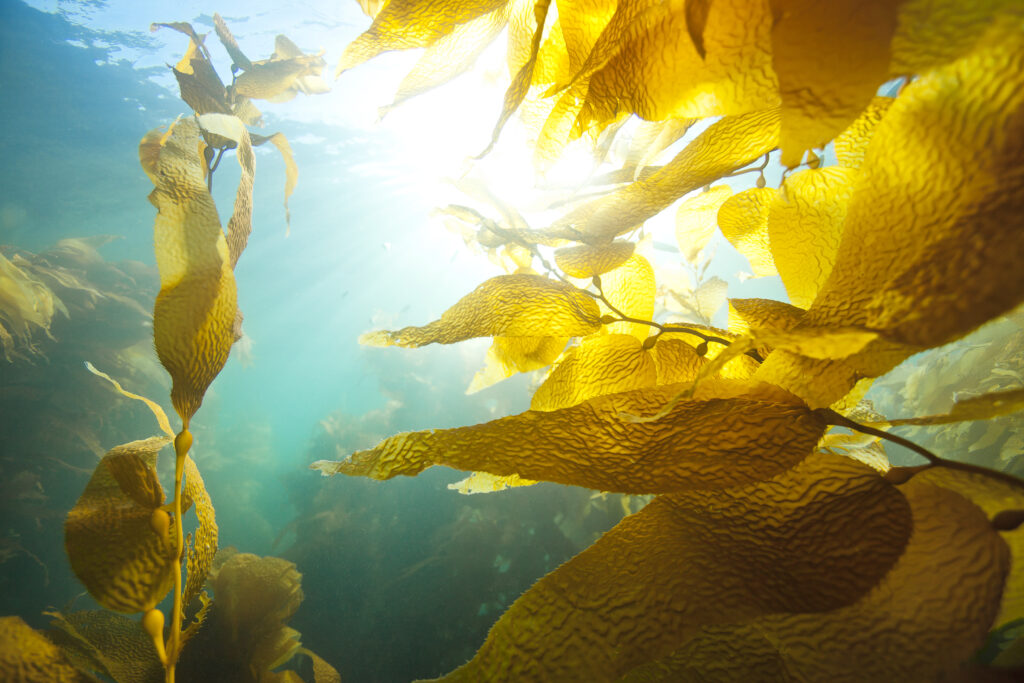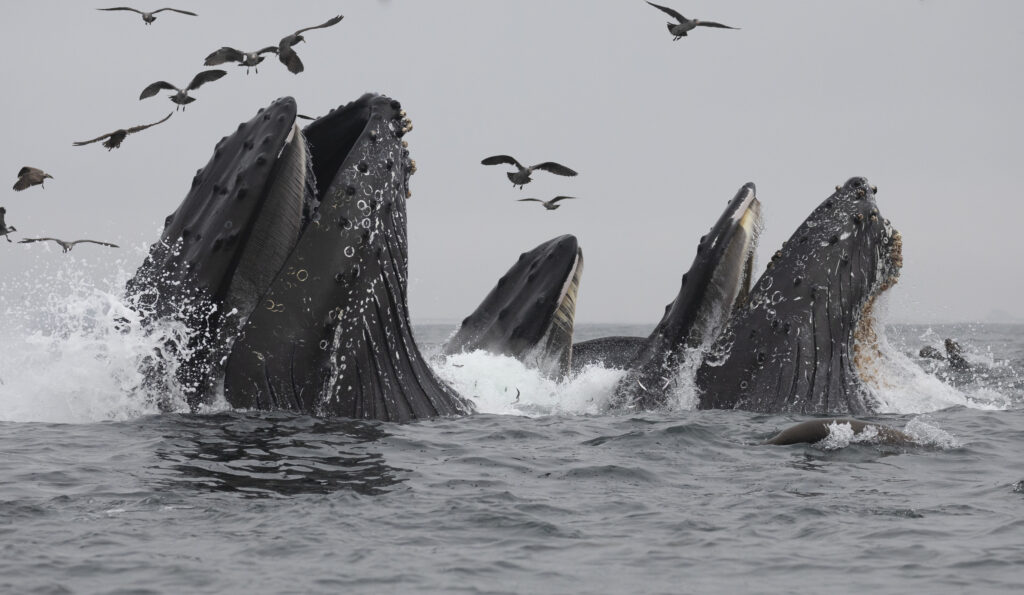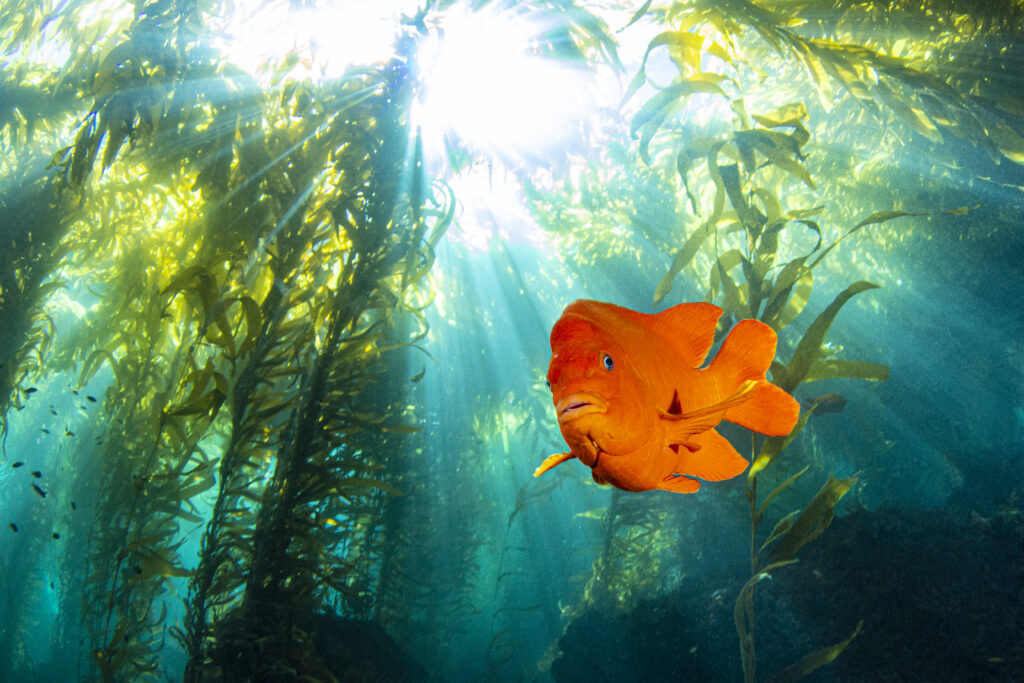Conserving 30% of California’s Coastal Waters by 2030: Progress Update
California’s coastal waters are home to species and habitats found nowhere else on Earth. Our iconic coastal and marine ecosystems – from sandy beaches and wave-swept rocky shorelines to lush kelp forests and deep submarine canyons – hold tremendous cultural importance, provide valuable recreational opportunities, and underpin a multi-billion-dollar blue economy. If you’re one of the millions of Californians who feel a deep connection to our oceans, then you know what’s at stake in the fight to protect them, especially in the face of a rapidly changing climate.
Conserving 30% of our coastal waters by 2030 will help ensure that people and nature can thrive together for generations to come. OPC is proud to be leading this work as part of the California Natural Resources Agency’s broader 30×30 initiative, a goal that California first committed to in 2020 and has since been adopted by the rest of the world. The Resources Agency’s Pathways to 30×30 strategy, released on Earth Day 2022, defines 30×30 Conserved Areas as “land and coastal water areas that are durably protected and managed to sustain functional ecosystems, both intact and restored, and the diversity of life that they support.” For coastal waters, California’s statewide network of 124 marine protected areas (MPAs) – 16% of state waters – already meets this definition. Now, OPC is working with California Native American tribes, state and federal agency partners, scientists, commercial and recreational fishermen, conservation organizations, and coastal communities to conserve an additional half a million acres by 2030.
In June 2023, OPC hired two new 30×30 Program Managers to help advance this ambitious conservation initiative. At the August 15, 2023 OPC Meeting, these newly onboarded scientists, Abby Mohan and Anh Diep, presented an update on the implementation of 30×30 in coastal waters. This update included details on OPC’s four key strategies to achieve 30×30: (1) adaptively managing the state’s MPA network; (2) strengthening biodiversity conservation in National Marine Sanctuaries; (3) exploring the role of other spatial management measures beyond MPAs and Sanctuaries, such as areas established for fisheries management or to protect water quality, in conserving biodiversity, and (4) supporting tribally-led conservation through the creation of Indigenous Marine Stewardship Areas.
This summer, OPC has made exciting progress across all four of these fronts, and we are eager to share our work, provide opportunities to get involved, and invite feedback from members of the public.
Continue scrolling for more…

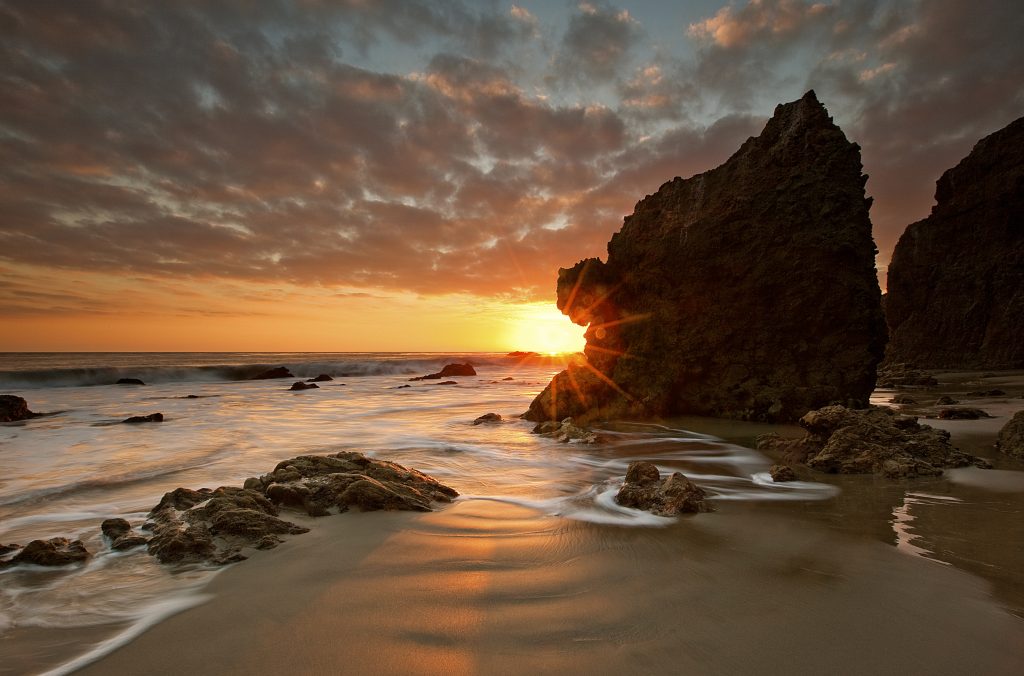
Adaptively Managing California’s MPA Network
Adaptively managing California’s MPAs to ensure they continue to provide strong protections for coastal and marine biodiversity, especially in the face of climate change, is a key component of achieving the 30×30 target. In July, the California Department of Fish and Wildlife released a set of prioritized recommendations from the first Decadal Management Review of the MPA network to guide adaptive management of MPAs moving forward. OPC is now beginning to work with the Department, the California Fish and Game Commission, other partner agencies, tribes, and stakeholder communities to implement these recommendations, which include actions related to MPA governance, the MPA management program, and MPA network performance.
Do you have ideas for how California’s MPA network could better protect biodiversity, strengthen climate resilience, and provide more equitable access to the coast and ocean? Members of the public can submit recommendations through a petition process with the Fish and Game Commission. Petitions are due to the Fish and Game Commission by November 30; instructions for submittal can be found on the Commission’s webpage.
Strengthening Biodiversity Conservation in National Marine Sanctuaries
National Marine Sanctuaries were established to conserve unique natural and cultural resources and include areas of exceptionally high biodiversity. While Sanctuaries are durably protected and provide important conservation benefits for marine life and habitats, each Sanctuary has different regulations and policies that will need to be assessed to determine the extent to which they provide positive outcomes for biodiversity.
This summer, OPC deepened its collaboration with the Greater Farallones National Marine Sanctuary and is actively engaging in its management plan update process. This process, which is characterizing key natural resources and evaluating threats to these resources, provides an unprecedented opportunity to improve the conservation of this Sanctuary’s unique and fragile biodiversity in the face of threats such as pollution and kelp loss. Options for strengthened protections will be presented for public input and discussion at the Sanctuary Advisory Council’s public meeting in spring 2024.
In August, NOAA’s Office of National Marine Sanctuaries released draft designation documents, including a draft management plan, for the proposed Chumash Heritage National Marine Sanctuary. This proposed Sanctuary would protect an ecologically significant area off California’s central coast and provide groundbreaking opportunities for tribal engagement in coastal and ocean management. OPC is closely tracking the potential designation of this Sanctuary and encourages members of the public to provide input during the public comment period, which is now open. Public comments on the draft designation documents are due by October 25, and public comment meetings will be held both in-person and online in late September – early October.
Exploring the Role of Spatial Management Measures Beyond MPAs and Sanctuaries
California’s coastal waters include a vast range of spatial management measures beyond MPAs and Sanctuaries, including areas established to protect water quality or support sustainable fisheries. Understanding the extent to which these measures are durable and provide biodiversity protections is a top priority for OPC. As a first step, OPC is developing a centralized inventory and map of spatial management measures in state waters.
The following types of spatial management measures are currently being considered for this inventory:
- Water Quality Protection: Areas that protect water quality, for example by prohibiting point source or storm drain discharges. Examples include Areas of Special Biological Significance, Critical Coastal Areas, or locally designated water quality protection areas.
- Fisheries Management: Areas or closures established for the purpose of supporting sustainable fisheries. Examples include essential fish habitat, critical habitat areas, rockfish conservation areas, cowcod conservation areas, no bottom trawl areas, and other regulatory areas such as kelp no take areas.
- Habitat and Species Management: Areas managed to protect critical habitats or threatened species. Examples include National Wildlife Refuges, State Ecological Reserves and Wildlife Areas, Habitat Areas of Particular Concern (a subset of essential fish habitat), species-specific areas of conservation (i.e., leatherback sea turtle conservation areas or white shark protection zones), and Estuaries of National Significance.
- Research and Restoration: Areas managed for research or scientific purposes, or areas with active restoration activities. Examples include university-designated reserves managed by the UC Natural Reserve System, federally-designated reserves (for example, the National Estuarine Research Reserve System), and kelp restoration sites along the North Coast.
- Recreation and Regulated Access: Areas with restrictions on human visitation and access, including areas established to support recreation or other critical activities. Examples include underwater state parks, seagrass protection zones, and de facto MPAs.
- Military Use: Areas established and managed by the U.S. military, such as bases and restricted training and operations areas. Due to the military use of these areas, many other human uses (e.g., recreation, shipping) are restricted within their boundaries.
Do you know of additional spatial management measures in California state waters that we should include in our analysis? We want to hear your thoughts. Please comment on this list by emailing 30x30coastalwaters@resources.ca.gov. Comments are requested by October 25.
Additionally, OPC is initiating a science-based evaluation of these spatial management measures, and their potential contributions to the 30×30 goal, through a working group of scientific experts being formed this fall in partnership with the California Ocean Science Trust. More information on this effort will be shared publicly in the coming months.
Supporting Tribally-led Conservation
Tribal communities have been stewards of California’s coastal resources since time immemorial, and the state has much to learn from their experience and traditional knowledge. The creation and implementation of Indigenous Marine Stewardship Areas (IMSAs), as outlined in the Pathways strategy, will support biodiversity priorities shared between tribes and the state, such as the protection of culturally important habitats and species. IMSAs would be a novel type of protection in California waters. OPC is in the early stages of developing policies to support this concept and looks forward to working in partnership with tribes to understand priorities for 30×30 and the tribal vision for IMSAs.
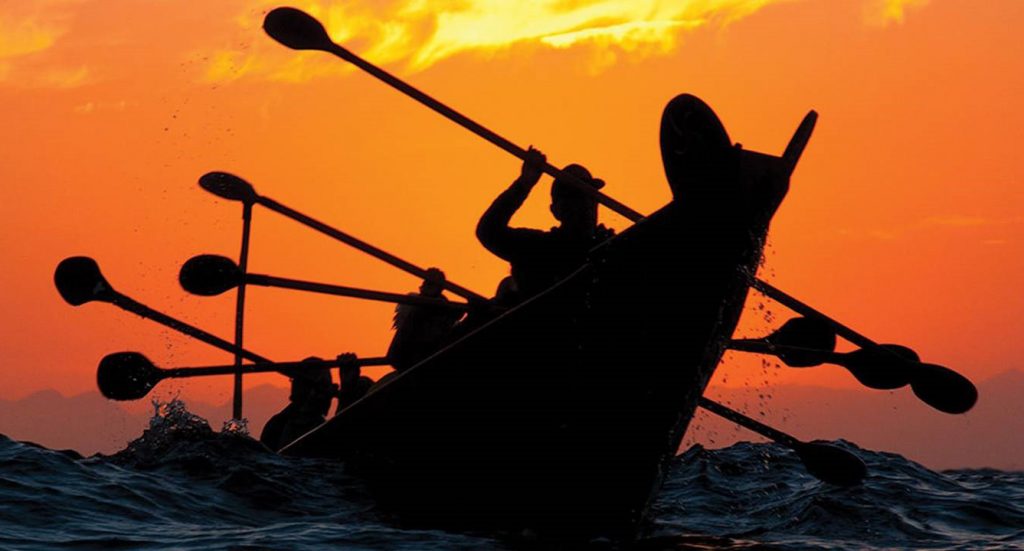
Community Engagement Updates
OPC believes community-led conservation is a powerful driver of the 30×30 movement. Our goal is to build clear points of entry so interested communities can easily access 30×30 information and determine how they can contribute their perspectives and connect with others.
Over the last several months, 30×30 Program Managers have begun meeting and connecting with coastal community members, listening to community concerns and insights, and strengthening connections and avenues of communication with the new team capacity. If you are interested in talking with us, please email 30x30coastalwaters@resources.ca.gov to set up a meeting. OPC is also finalizing exciting social media and website updates to create a more accessible and easily navigable website portal with information on relevant topics, upcoming meetings, and ways to get involved.
Upcoming Events of Interest:
- Learn more about Pathway 4: Enhancing Conservation and how OPC is advancing 30×30 in Coastal Waters: 30×30 Program Manager Anh Diep will be presenting at Friends of Harbors, Beaches, and Parks 30×30 Workshop Series on September 28, from 10:00 a.m. to 11:30 a.m.
- Connect with OPC at the 30×30 Partnership Gathering event: OPC staff will table at the 30×30 Partnership event on October 11 and 12 to connect with community members and share updates!

To follow OPC’s progress on 30×30, visit our 30×30 webpage, follow us on social media, and sign up for emails.
